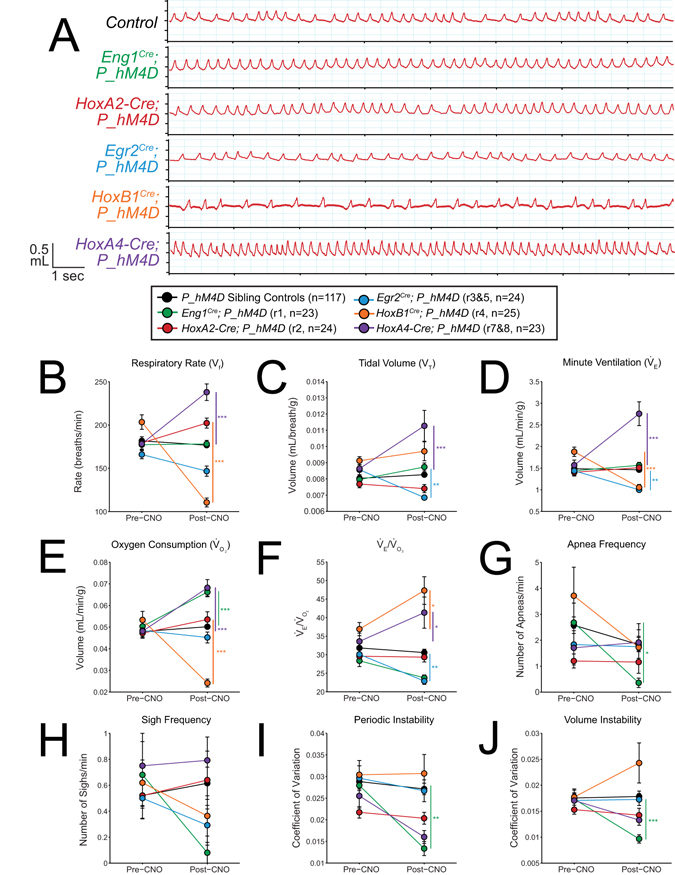Figure 3.

CNO-hM4D perturbation of rhombomeric domains in the adult animal results in a variety of respiratory phenotypes under room air conditions. (A) Representative traces of respiratory wavesforms in P_hM4D sibling controls and rhombomere-Cre; P_hM4D mice after CNO injection under room air conditions. (B–F) Quantification of pre- and post-CNO respiratory parameters. Perturbation of rhombomere-derived populations under room air conditions results in increases, decreases, and no change in respiratory rate (B), tidal volume (C), minute ventilation (D), oxygen consumption (E), / (F), apnea frequency (G), sigh frequency (H), periodic instability (I), and volume instability (J) as compared to pre-CNO values and sibling controls. Statistical significance was determined using a linear mixed-effects regression model with animal type (experimental or control) and CNO treatment (pre or post) as fixed effects and animal ID as a random effect. *p < 0.05, **p < 0.01, ***p < 0.001.
